Amazon Influencer Program: Best Passive Income Source via Social Media
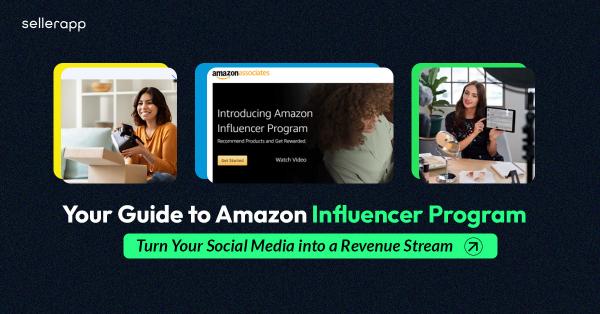
These days you don’t need to be Kylie Jenner to use your social media platform and get paid. Amazon influencer program prioritizes quality over follower count, so when your content holds equal potential as any influencer’s, you become successful.
The value exchange is quite simple: you bring advantage to Amazon’s customers, helping them make an informed purchase decision via your content. And Amazon offers you a portion of the earnings.
Ultimately, you can turn your content into commission by recommending products, sharing the product’s usefulness, or conducting a comprehensive review. All you need is a humble social media presence and a camera set up to capture your products in the best way possible. Of course, more followers and more engagement will equate to more commissions.
Keep reading to learn how you can build a passive income channel based on your experience with Amazon products.
What is the Amazon Influencer Program?
The Amazon Influencer Program is an opportunity that allows you to make your personal brand prominent on Amazon through individual storefronts. It uses social media to reach viewers and lead them to influencer-specific storefronts which contain a collection of recommended products.
For example, Cristen, a micro-influencer, promotes her recommendations on her influencer program Amazon storefront page.
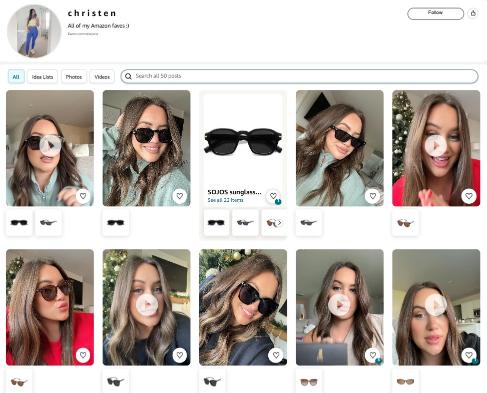
So, if you have a strong follower base or you upload content that intrigues your audience about the items featured, you can invite them to visit your Amazon Storefront. From visiting the Amazon Storefront, they can find and add products directly to their Amazon cart and if they complete the purchase within 90 days, you get a commission from it.
You can also find a dedicated space to:
- Create product lists to segregate products,
- Post images or video content (almost like Instagram),
- Customize the space according to your branding, and
- Get a unique URL to highlight your brand identity.
All of it creates the most impact on the audience.
Amazon influencer program requirements
Amazon Influencers Program currently imposes no lower limit to your social media follower count. Which is brilliant for micro and nano-influencers that are looking to get started. However, However, Amazon will assess you for your eligibility before they approve you as a part of it.
So, please ensure your account, content, and everything relevant is aligned with Amazon influencer program requirements and Amazon’s policies.
When reviewing your application, Amazon will consider engagement metrics such as likes, comments, and shares, which hold more weight than your actual follower count. So, your engagement metrics must be relatively high.
But that’s not the only few Amazon influencer program requirements. Even after you finish the review process, you’ll have to maintain the quality of the content. Amazon may sporadically review your UGC performance to ensure they continue to meet the set standards.
In addition, irregular posting could decrease your chances of getting accepted into the program. If you reduce the frequency of posting after acceptance, it may lead to disqualification during performance reviews.
You must have one or all of the following social media accounts through which you’ll apply for the program: YouTube, Instagram, Facebook, or TikTok. Note that if you are applying for the Amazon Influencer Program using an Instagram or Facebook account, you should use a business account.
Amazon gauges your professionalism, authenticity, and expertise and thus stresses recording quality, sound clarity, and the essence of the content you’re uploading (whether it adds genuine value to the viewers). We recommend sticking to a niche, be it fashion and lifestyle, makeup, home and kitchen, etc., and reviewing what is most relevant. When you start projecting yourself as an expert in a specific niche, people tend to trust you more and people will follow your storefront to make purchases.
The current affiliate policy strictly binds influencers with the terms of affiliate disclosure. This means influencers need to mention #Ad or #Sponsored in their content if they choose to promote their storefront. Align with the Amazon influencer program requirements to make sure there’s no roadblock in approval. Amazon is known for maintaining strict regulations.
Ready for a pro tip?
The algorithm always favors a new social media account. It’s called a honeymoon period, where the channels give new accounts more exposure. If you start with a new account and post consistently, your channel is more likely to grow faster, reach more customers, and potentially lead more people to your storefront. In short, it increases your likelihood of making more commission from your storefront.
So, we recommend starting your Amazon influencer program with a clean slate for the best results while sticking to the requirements for Amazon influencer program.
How does the Amazon Influencer Program work?
Amazons influencer program lets influencers and sellers (and Amazon) thrive symbiotically. As influencers redirect their followers to the Amazon marketplace, they get commissioned for their efforts. Sellers can opt for this program as well while collaborating with influencers to get external traffic from the influencer’s social media account.
So, for aspiring influencers, here’s a roadmap to successful sales:
- Build a social media presence through single or multiple channels.
- Self-assess your content according to the Amazon influencer program requirements we mentioned above and complete the Amazon influencer program sign up process.
- Once accepted by Amazon, one can create a personalized storefront. The customized store must reflect its influencer persona and content niche through its design. That’s how one can set oneself up for success as an influencer in the long run.
- Content creators or influencers share reviews or any other product recommendation content. They share their storefront link so that users can be redirected to purchasing the product with just one tap of their finger.
- Whenever a user clicks on a link, a cookie stays active for 24 hours. If a customer brings the product to their cart within a 24-hour window, the influencer will be attributed to a commission for the sale.
Note: Although the cookie goes inactive after the 24-hour window, the purchase can occur within 90 days.
It is a fairly simple process for anyone willing to have a headstart. If it interests you, let’s get you started.
How do you apply for the Amazon Influencer Program?
The journey to become an Amazon influencer is divided into 4 major steps. Registration, signing up, creating content, and approval from Amazon to have access to your Amazon Storefront.
To sign up for Amazon Influencers Program, follow these steps:
Step 1: Registration
- Tap the link to visit the Amazon Influencer Program homepage.
- Click on “Sign Up.”
- Create a new Amazon account. You can also use your Amazon Associates account.
- Confirm your identity by responding to an OTP verification.
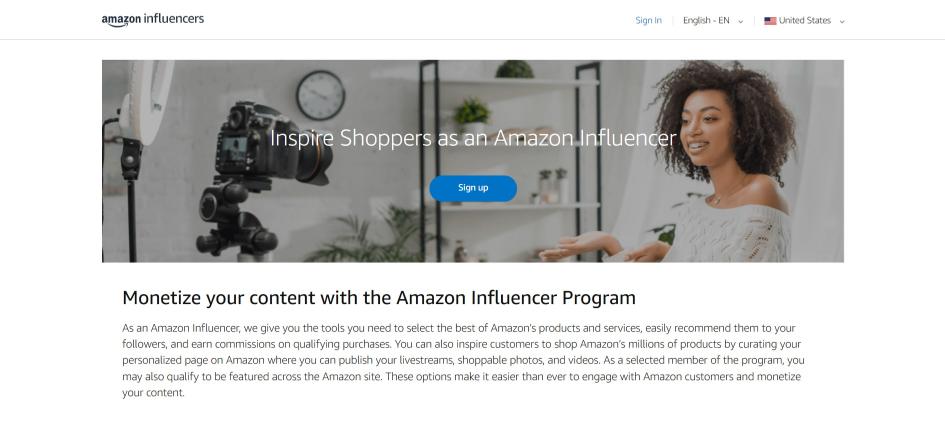
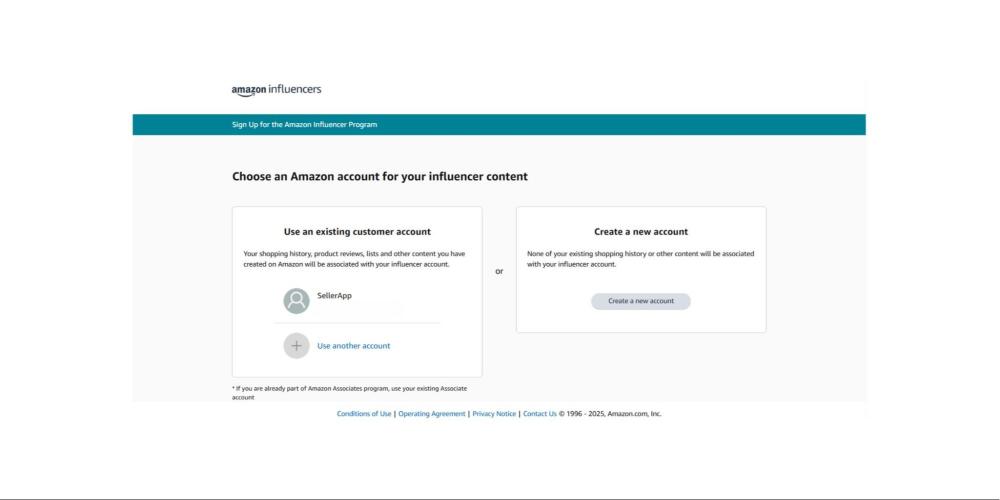
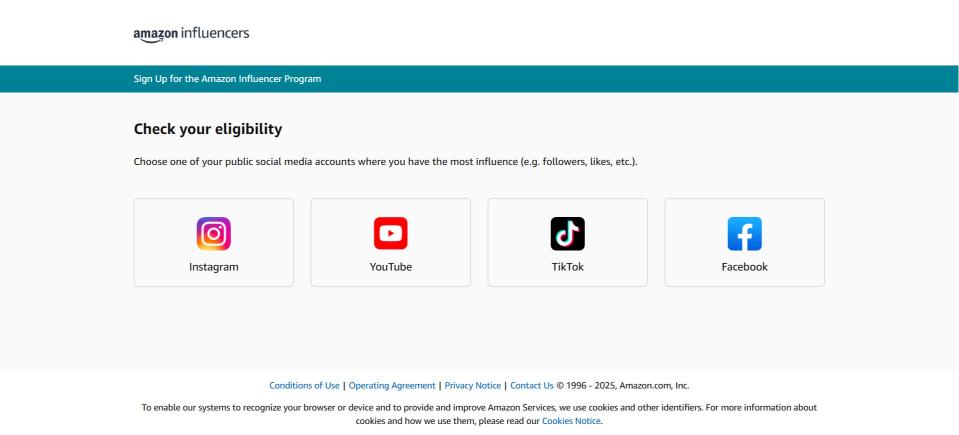
Step 2: Applying for the Influencer Program
You must choose YouTube, Instagram, or Facebook as your primary user-generated content (UGC) platform to apply for the program. We recommend using the platform you’re most confident about.
Link your account to Amazon or provide your Instagram handle, follower count, and post frequency to sign up for an Amazon influencer program.
(If you handle multiple accounts, you’ll have a chance to add the rest of the platforms later.)
Note: Experts suggest that emerging accounts start with YouTube Shorts or TikTok accounts due to high engagement rates on these platforms.
For influencer page verification, add all the social media profiles you run, add further details, and for the final step, follow the influencer program Amazon from your profile.
Step 3: Create your storefront and upload content
While awaiting approval from Amazon, start building your storefront and prepare content to promote products to your audience.
- Go to the Amazon Associates homepage.
- Tap on ‘Influencers’ from the top menu bar.
- Click on ‘My Page’ to start creating a storefront.
- Go to ‘Create content’ and click ‘Idea list’ to create collections of products you are willing to recommend.
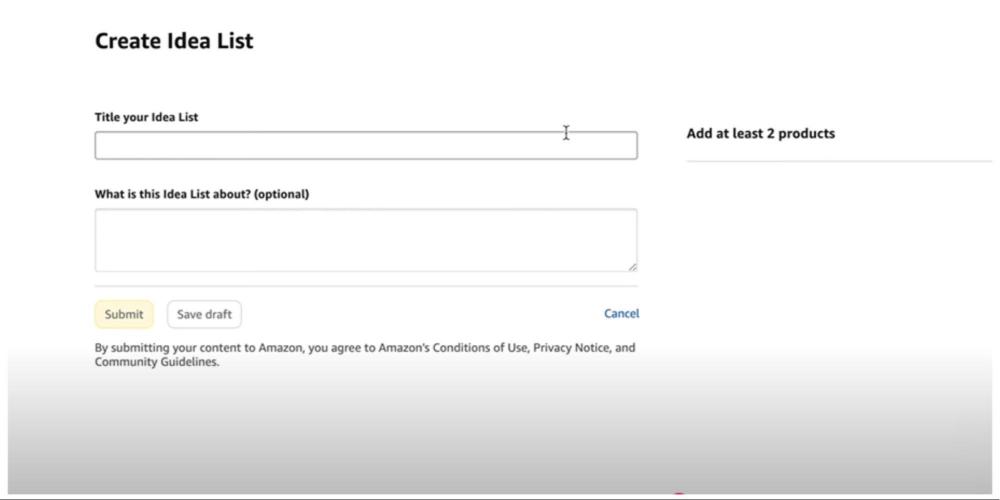
5. Repeat the same process to upload content related to your recommended products.
6. Then upload the product, add a product link (one or more), add a caption, and finally click ‘ ‘Submit post’.
7. Create videos that help you get your store approved.
8. Add a Storefront name, tagline, profile picture, and optional header image. Consider using Canva to make designs and publish them on your storefront for a customized touch.
Tip: When you put ample effort into your storefront, it positively influences the system to approve your storefront. After all, a well-curated storefront is meant to attract customers.
Step 4: Approval
Follow the Amazon Influencer Program on Instagram using the registered account to complete the application process. Once approved, you can start curating and adding product recommendations to your Amazon Storefront. Then, you can share your store link on different social media handles.
Another question may linger in your head at this point:
How to get approved for the Amazon Influencer program?
The algorithm accepts your request if your content possesses value-adding aspects. Keep the product in focus, provide clear audio, and provide a crisp, concise review with 1080p resolution. Do not repurpose old social media content, as Amazon will reject it at once! These are just a few ways to ensure your selection.
Amazon Onsite Program: How do you get your content approved for it?
When you get accepted in the Amazon influencer program, you can post your review content on your Amazon Storefront. Amazon pushes that video on the product page. It can either be on the upper carousel or lower.
However, you must be accepted for the Amazon Onsite Program to get your video up on the product page in the first place. Once you upload three reviews, you automatically trigger the system for consideration but make sure the content is professional for you to get approved.
So what is it?
The Amazon Onsite Associates Program is an invite-only extension of the Amazon Affiliate program that allows content creators, publishers, and bloggers to have their product-related content featured directly on Amazon’s product detail pages.
Once you’re a part of the program, your review content will go up on the product page if it matches the quality. When a customer interacts with your content on the product page before making a purchase, it directly qualifies you for a commission. Commissions depend upon the category of products you’re promoting.
Note: You only get three tries to qualify for the Amazon Onsite program.
How much can you make being a part of the Amazon Influencers Program?
Even micro-influencers can dominate the field by leveraging engagement. So, the answer to this question is that it depends.
The number of direct messages, comments, and saves per post are significant credibility factors that can give you an edge when applying for the Amazon Influencer program. That is why many micro-influencers on Instagram, YouTube Shorts, and TikTok ask you to comment on specific words, to which they will send you links to the product they are showing in their content through automated DMs. So that the engagement levels grow and they qualify for doing brand promotions and collaborations.
Ultimately, what you earn is majorly dependent on your reach, your content, engagement, and the commission percentage for the category of product you’re promoting. Take a quick look at the category-wise breakdown of the commission percentage you’ll be awarded for being a part of the influencer program Amazon conducts.
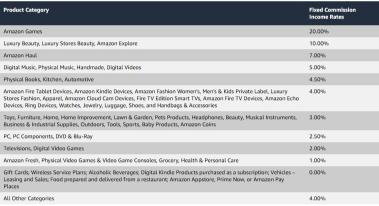
Some categories may have a minimal commission percentage, but it builds up incrementally if the product you’re promoting has high-volume sales.
Amazon influencer Thomas Graham who talks about how to use the platform to make money, claims to have followed the best practices, leading him to earn about $13,000 monthly! That is how much you can make when you incrementally grow in this field.
So, how to choose products to promote being in the influencer program Amazon?
While thinking about products to promote, consider a few factors:
- How much monthly sales does this product have? High-volume sales will increase your chances of generating more revenue.
- How much is the commission per sale within that product category?
Look for products with a higher commission rate yet resonate with your niche. For example, if you’re running a cooking channel on Instagram and decide to review kitchen supplies, you not only get a 4.5% commission on each sale but also harness the high demand for kitchen products.
If you promote a mixer that costs $100, you get a commission of $4.5 for each sale. However, if you sell a knife set costing $20, your commission would be 90 cents. Although it’s next to nothing, the sales volume matters. We recommend using the SellerApp Chrome extension to better understand the sales volume and plan accordingly by calculating profit.
1) Does this product need a review?
Certain one-time buy products that are high priced need in-depth reviews. You may never check reviews before buying a new flavor of CapriSun. But if you plan to buy a new sunscreen, you’ll look through multiple reviews or have numerous questions.
2) How much does the product cost?
As we’ve already explained, low-cost products are not worth the effort of making review content unless the sale volume is high. Install the SellerApp Chrome extension and check the daily sales for the product before you plan the content around it.
3) How much competition is there for that product review?
Find the products that lack a proper review. If you post quality content, Amazon will easily show your review on the product page, increasing your chances to contribute to onsite reviews.
4) What is the lifespan of that product?
Is it a product of hype, or is it a thing that will stay? Is it an evergreen product or seasonal? Does it have the potential to keep bringing you sales?
5) Are influencer videos allowed on that product page?
There will be no chance of earning passive income if the brand does not allow influencer videos. How do I find out? When the thumbnail images below the main image have a section of videos, saying ‘videos’ means the product seller accepts reviews.
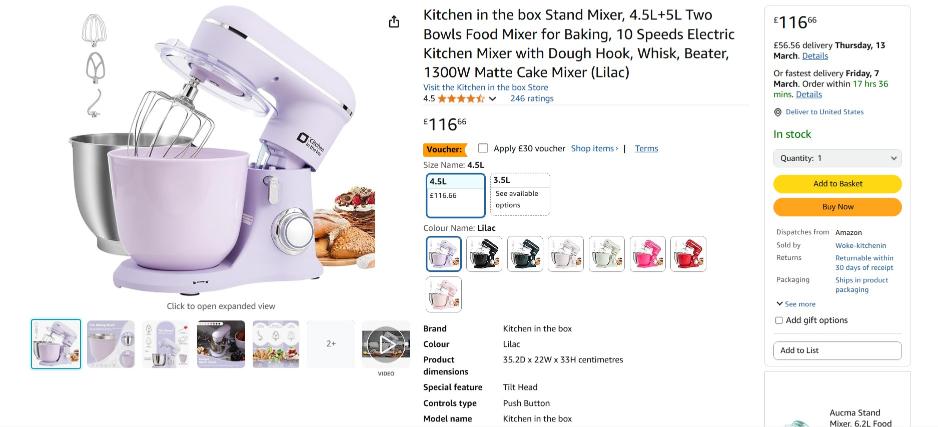
You can track your earnings at the Amazon Influencer dashboard, which also demonstrates your audience engagement and sales metrics.
What’s the difference between the Amazon Influencer Program and Amazon Affiliates?
Amazon Influencer Program members are Amazon Affiliates. However, they have access to additional features, including creating custom storefronts and unique URLs. Influencers build their unique recommendations based on their niche and their content.
Amazon Influencers typically use social media platforms like YouTube, Twitch, or social media to push organic traffic to their Amazon storefronts, where their followers find the content and get inspired. The attached link leads them to the influencer’s Amazon Storefront.
On the other hand, the Amazon Affiliates Program has always existed since Amazon’s inception in 1996. They primarily share affiliate links for specific items on their blogs or social media accounts, but this program deprives them of the opportunity to create an exclusive storefront.
Instead, the affiliate links they share lead the audience directly to the individual product pages.
Thus, Amazon Influencers and Amazon Affiliates earn commissions by promoting products on Amazon. The key difference lies in the platform they use for promotion.
Amazon affiliates share product links that directly lead viewers to the product page, and Amazon Influencers present product recommendations in their social media content and add links to their Amazon influencer storefront.
| Aspects | Amazon Affiliate Program | Amazon Influencer Program |
|---|---|---|
| Promotion Method | Affiliate links on websites, blogs, social media | Curated storefronts, social media posts, videos, live streams and lists |
| Commission Structure | 1% to 20% based on product categories | Similar to an affiliate program, with the potential for additional income with Amazon's onsite program |
| Requirements | Website or blog with consistent traffic; approval based on sales performance | Strong social media presence; approval based on follower count and engagement |
| Key Platforms | Websites, blogs, social media | Social media platforms (e.g., Instagram, TikTok, YouTube) |
| Application Process | Apply through Amazon Associates; approval is based on website quality and traffic. | Apply through the Amazon Influencer Program; approval is based on social media influence. |
How to promote your Amazon Influencer Storefront
Let’s check out different ways to promote your influencer storefront and maximize your earning potential through the Amazon influencer program.
Add your Amazon storefront link to your bio or as a story highlight. You can publish shareable content around the product, review it, and ask your followers to check it out.
Place the link to your Storefront link in your profile’s “About” section.
Share content in Facebook Stories, attaching the storefront link. You can also incorporate a “Shop Now” button on your Facebook business profile, helping visitors to check out your
Amazon influencer page. In product-related posts, include links to your storefront page and the relevant product detail page on Amazon.
YouTube
Insert your influencer Storefront link in your channel’s “About” section or video description for easy navigation. You can also use YouTube Shorts and redirect them to the link in your About section.
Include your influencer page link in your Twitter bio. Regularly tweet about product recommendations and include your Storefront link.
Website & Blog
Identify your audience’s interests and create blog posts that support relevant product niches.a
Keep publishing fresh content to engage readers, including hyperlinks to your Storefront page.
Snapchat
Use Snapchat Stories to give followers a glimpse into your influencer Storefront and the products you recommend.
Amazon Live
Amazon Live enables members of the Amazon influencer program to host live streams to promote brands and products directly. Viewers can find live streams through social media and watch them on Amazon.
Promoting services
In addition to commodities, influencers can promote Amazon services, known as “Bounties,” in the Affiliate program. The services include Prime Video, Amazon Baby Registry, Amazon Business, Amazon Home Services, Amazon Music, etc. This program offers fixed commissions, which vary for each product.
Say you have a BookTok channel (book review/ readers’ community on TikTok). You can promote Audible along with Kindle, adding value to your followers and generating hefty commissions for you.
All of these combined can widen your horizon to reach your followers or viewers effectively, significantly increase the store’s visibility, and drive sales.
How to reach out to Amazon Influencers?
In 2025, we know that social proof drives the most sales. If you are an Amazon seller and want to collaborate with Amazon influencers, start by sending cold emails instead of DMs for better responses. It will not only make you look more professional, but it is easy to execute because most influencers not managed by an agency usually leave their professional email address in their bio.
But how do you choose the correct influencer to promote your products? Tools like HypeAuditor or Modash are here to save the day. It filters influencers according to engagement rates, audience, niche, and other essential factors.
If you prefer connecting with Amazon exclusive service experts to play the game right, we bring you SellerApp’s Influencer Outreach Program to assist you in your journey. This can help you meet and collaborate with influencers who can amplify your Storefront visibility through their prominent social media presence. You can find it under the ‘Mixed media marketing’ section of ‘Services’. From there you can request or schedule a call.

We recommend a formal email to introduce yourself, your brand, and your collaboration proposal in a structured and concise manner, explaining your terms and conditions straight.
Using a database of influencers can streamline this process, helping you identify the right creators and tailor your outreach effectively.
You have three goals to meet while sensing collaboration request emails. Get your Email opened.
Get your email read. Get a positive response to your communication. For this, a short, crisp, and concise message emulating your brand’s voice will evoke a sense of curiosity, and a sincere subject and opening line will maximize the chances of a reply. Enter their storefront link and add a message of reassurance. It not only generates a positive feeling but highlights your genuine interest.
Final thoughts
The Amazon Influencer Program is more than just a commission-based model—it’s a golden opportunity to transform your social media influence into a thriving revenue stream. By choosing the right products, creating high-quality content, and consistently engaging with your audience, you can carve out your niche in the ever-growing ecommerce landscape.
As Amazon pivots to a quality-over-quantity approach, increase your comment-to-follower ratio, average likes, and the number of direct messages.
Whether you’re aiming to make a side income or scale it into a full-time career, the Amazon Influencer Program opens up endless possibilities. Now, it’s your turn to build, influence, and earn—one product at a time.
But here’s a catch. You also have an option to professionally curate your unique Storefront to successfully partake in the Amazon influencer program and turn casual visitors into customers. Whether you’re a brand owner on Amazon or an influencer with ironclad determination, a well-optimized well-designed storefront can be a small step to a massive leap.
Simply visit our SellerApp dashboard, select ‘Services’ from the menu bar in the extreme left, click on ‘Listing optimization’, and click ‘Create storefront’. From there, you can schedule a call, and our representatives will connect you with our Amazon listing experts.
Additional read:
Is Amazon Pay Good For Sellers?
15 Practical Ways to Make Money on Amazon
Amazon Scams: How Sellers Can Stay Protected?
Going crazy over your Amazon product research?



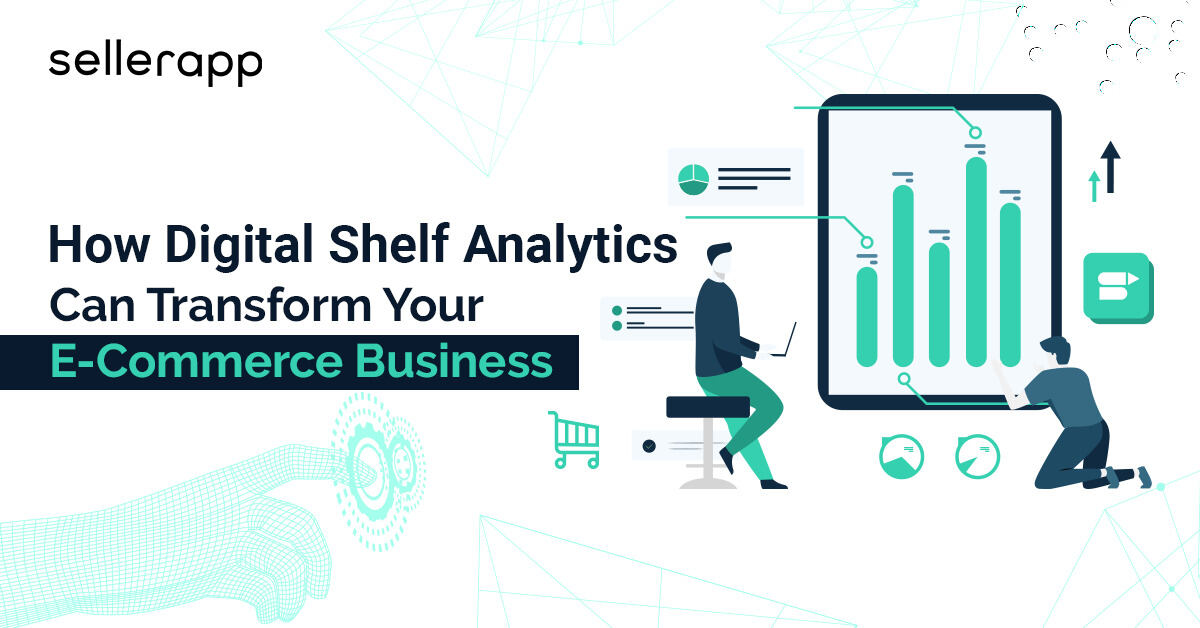
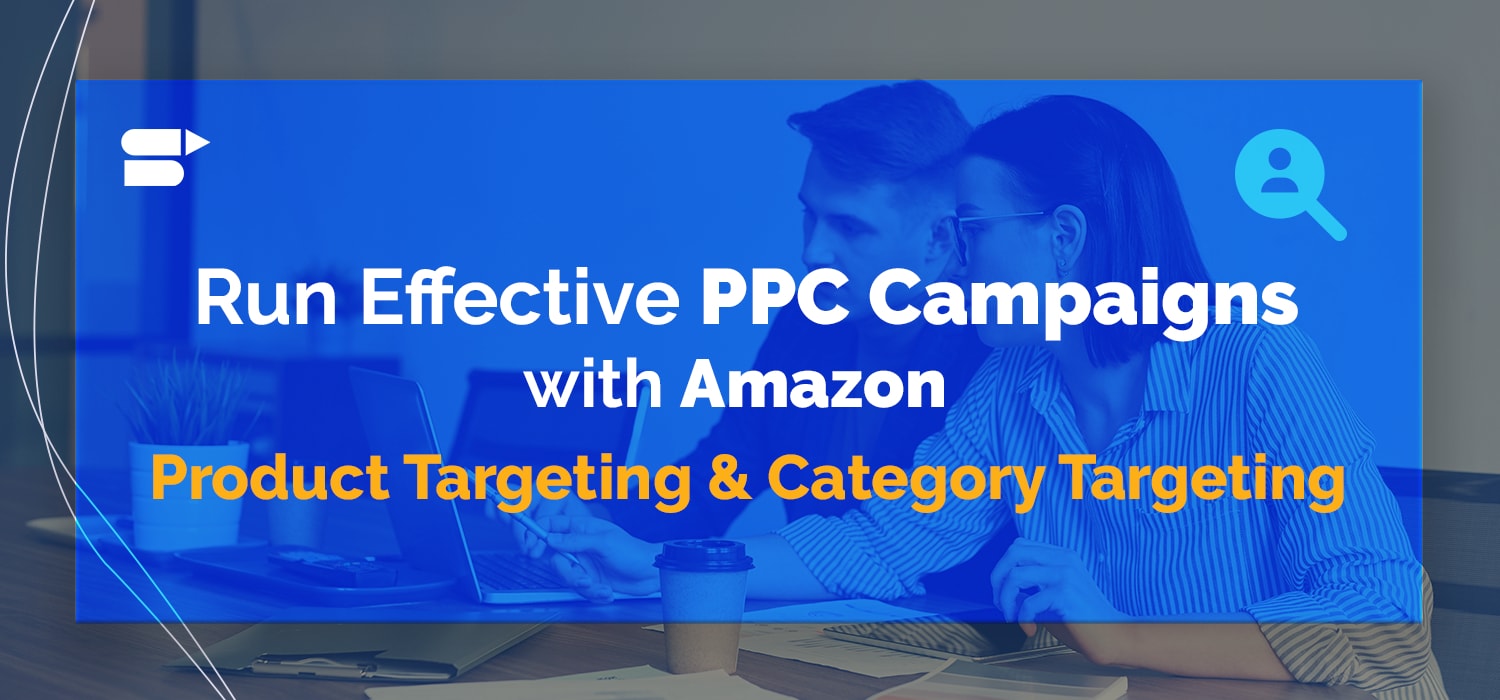
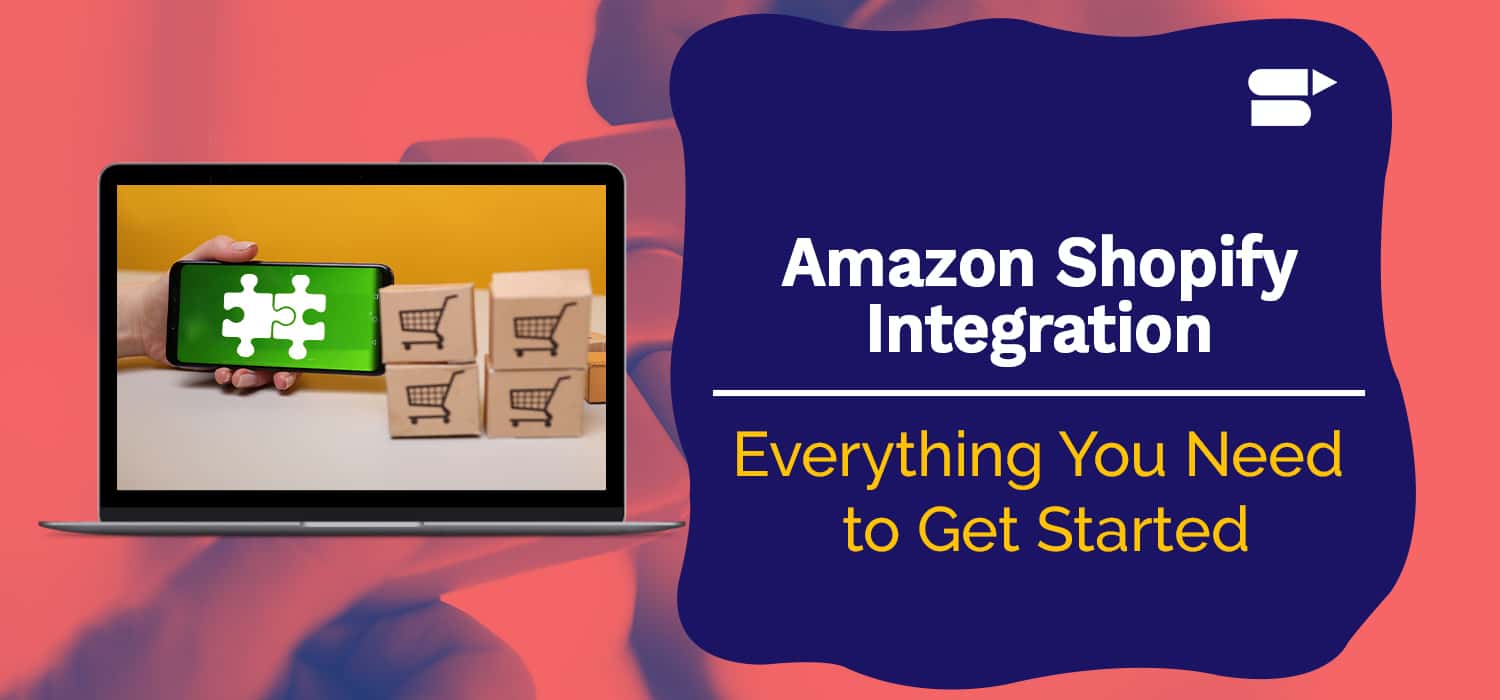
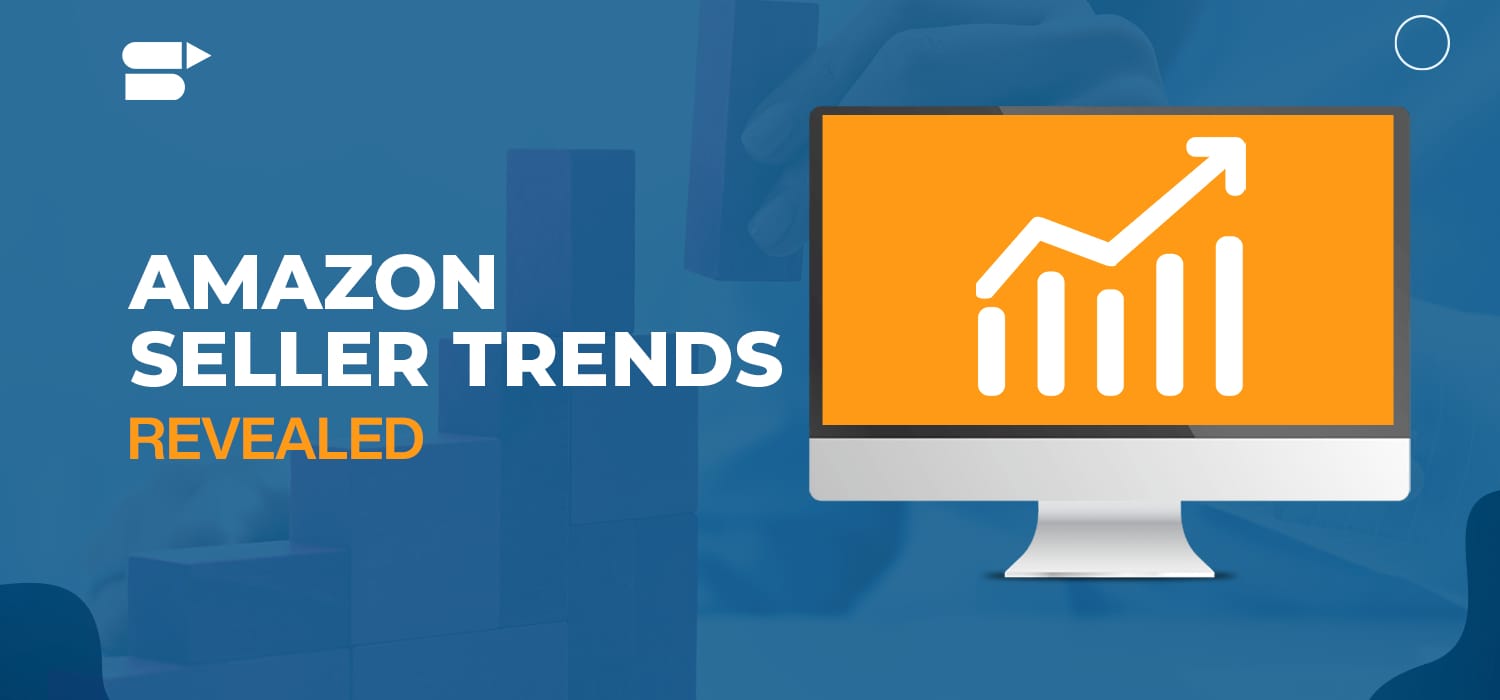
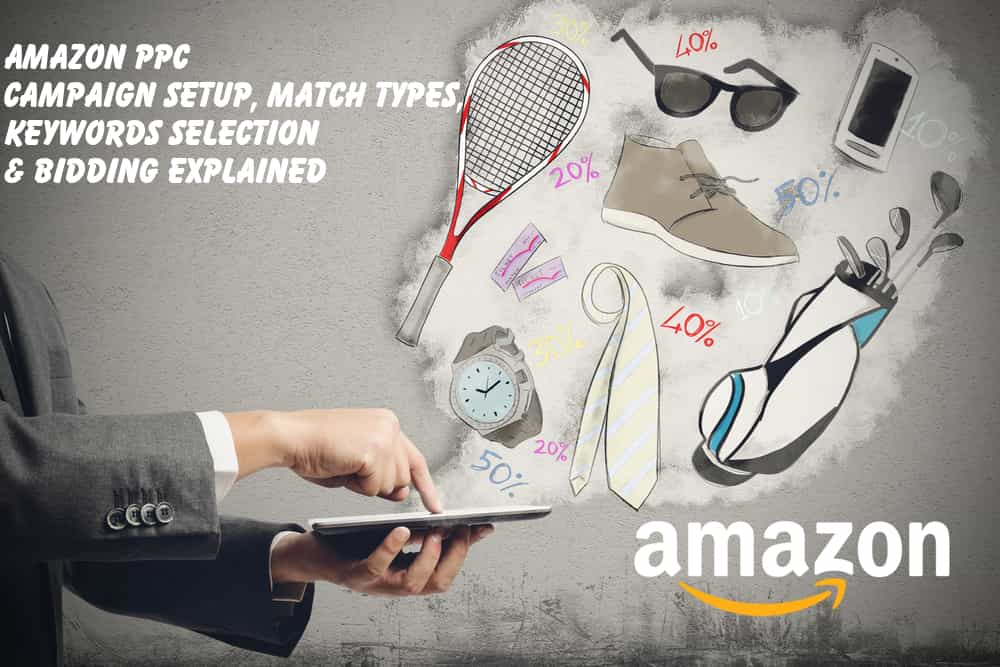
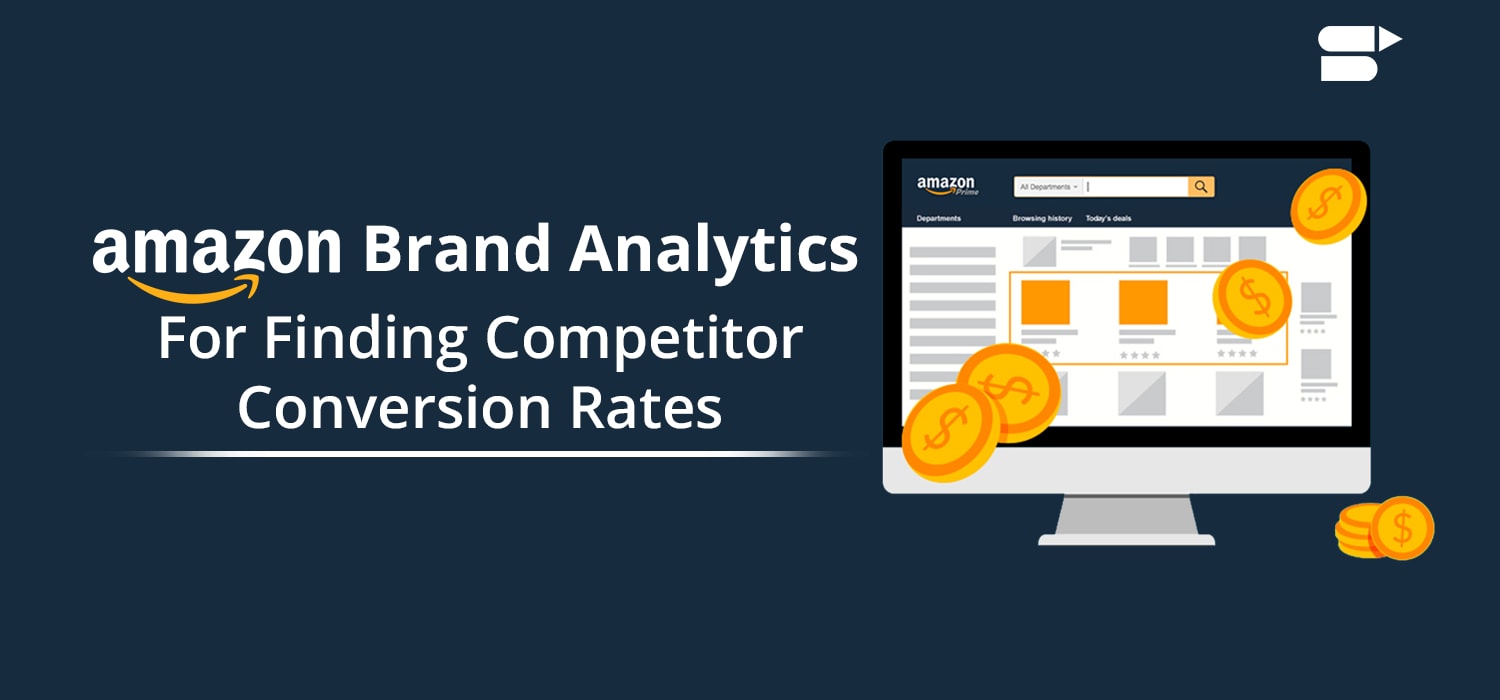
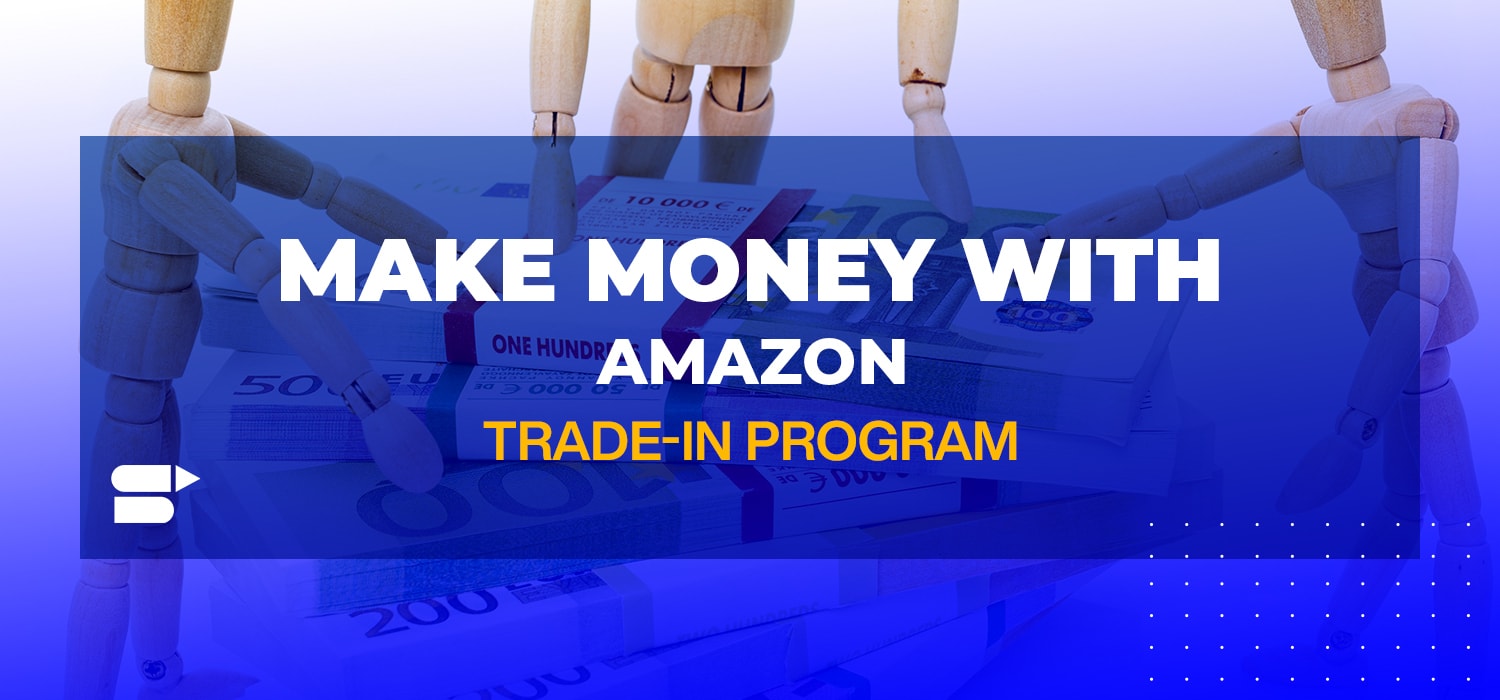
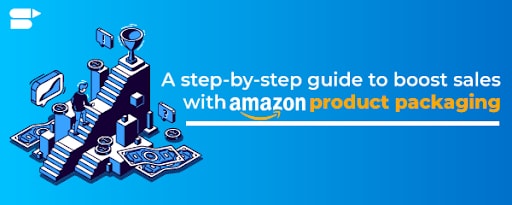
Rosanna Dewire
September 4, 2022Thanks for sharing this informative post about the Amazon Influencer Program. I especially liked the section on using analytics to measure the success of my influencer campaigns.
Arishekar N
January 17, 2023Thanks for sharing your feedback
Lisa Mez
November 22, 2022Your guidelines on how to create engaging content and leverage your social media following to grow your audience are spot on.
Arishekar N
January 17, 2023Thank you Lisa for you feedback.
David Miller
April 5, 2024I liked the topics of this week because they are relevant though.
Clare Thomas
July 2, 2024Thanks for sharing your thoughts
Elizabeth Hernandez
April 9, 2024These recent updates have been very informative; thanks!
Clare Thomas
July 2, 2024Very happy to hear that.
Christopher Garcia
April 24, 2024I’ve Been Waiting For This Month’s Content, The Amazon Influencer Program Guide is super helpful!
Clare Thomas
July 2, 2024Glad you liked it.
Amanda Thomas
April 24, 2024Good post, This weeks insights are invaluable.
Clare Thomas
July 2, 2024Thanks for sharing your thoughts. Your feedback drives us forward.